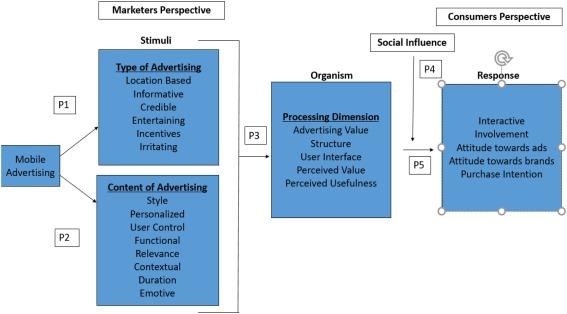How to Effectively Integrate SEL into Your Digital Classroom: Strategies for Online Success
With the rise of digital learning environments, integrating Social-Emotional Learning (SEL) has become an essential component of successful online education. Teachers and educators worldwide are seeking effective strategies to foster emotional wellbeing,interpersonal skills,and resilience among students in virtual classrooms. This article explores proven methods for integrating SEL into your digital classroom, highlights its benefits, and provides actionable tips for online success. whether you’re new to SEL or a seasoned practitioner, these strategies will help you create a more engaging, supportive, and successful learning community.
What is Social-Emotional Learning (SEL)?
Social-Emotional Learning (SEL) refers to the process by which students develop the skills needed to understand and manage emotions, establish positive relationships, make responsible decisions, and handle challenging situations effectively. SEL is rooted in five core competencies:
- Self-awareness
- Self-management
- Social awareness
- Relationship skills
- Responsible decision-making
In the context of a digital classroom, integrating SEL means adapting these competencies into virtual touchpoints, activities, and interactions that support students’ emotional growth and academic success.
Why Is Integrating SEL Into digital Classrooms Vital?
- Enhanced Engagement: SEL builds connections, making virtual learning more interactive and meaningful.
- Improved Academic Performance: Students with strong SEL skills are better at managing stress and collaborating on assignments.
- Reduced Anxiety and Isolation: SEL addresses feelings of loneliness, especially prevalent in online environments.
- Positive Classroom Culture: SEL creates a sense of safety and belonging among students, even at a distance.
Incorporating SEL in your digital classroom helps students feel seen and heard, improving wellbeing and overall performance.
Key Strategies to Effectively Integrate SEL into Your Digital Classroom
1. start With Daily check-Ins
-
Use digital tools like Google Forms or Microsoft Teams polls for short mood surveys.
-
Encourage open-ended responses to prompt self-reflection (“How are you feeling today?”).
-
create a safe habitat where students can share their thoughts privately or anonymously.
2. Foster Collaborative Learning Experiences
-
Break students into small groups using breakout rooms for cooperative projects.
-
Assign rotating roles to encourage leadership and teamwork.
-
Use collaborative platforms such as Padlet, Jamboard, or Nearpod for group activities.
3. Incorporate Mindfulness and Stress-Reduction Activities
-
Begin each class with a 2-minute guided meditation or breathing exercise.
-
Use video resources from YouTube or GoNoodle for mindfulness breaks.
-
Encourage students to share their coping strategies in a virtual discussion board.
4. Integrate SEL into Curriculum and Lesson Plans
-
Add reflective writing prompts at the end of assignments focusing on emotional reactions or teamwork experiences.
-
Embed SEL-focused literature or case studies related to empathy, conflict resolution, and perseverance.
-
Connect SEL themes to existing academic standards, showing relevance across subjects.
5. Use Digital Recognition and Praise
-
Celebrate milestones and positive behaviors with digital badges, shout-outs, or certificates.
-
Highlight acts of kindness or excellent collaboration in a class newsletter or wall of fame.
6. Provide Opportunities for Student Voice and Choice
-
Let students choose project topics or discussion formats to boost engagement and autonomy.
-
survey students regularly for feedback on class activities and SEL integration.
Practical Tips for Implementing SEL Online
- Consistency is Key: integrate SEL routines into your class schedule so students know what to expect.
- Leverage Technology: Use learning management systems (LMS), apps, and extensions tailored to SEL (try ClassDojo, Flipgrid, or Seesaw).
- Involve Families: Share SEL practices and resources with parents to reinforce skills beyond the classroom.
- Set Clear Expectations: Clearly communicate digital etiquette, respect, and participation guidelines.
- Build Relationships: Take time to get to know your students individually, even through speedy emails or private messages.
Case Study: SEL in a Virtual Middle School Classroom
Ms. Parker, a middle school teacher, integrated SEL into her digital classroom by beginning every session with a “feelings circle” using Padlet. students were prompted to type or record their feelings. Over time, she saw a marked increase in class participation and a decrease in behavioral issues. By implementing regular group projects and digital recognition systems,her students began to feel more connected and motivated,despite learning remotely. Parents reported fewer stress-related complaints and greater enthusiasm about school.
First-Hand Experience: Educator Insights
“Integrating SEL in my virtual classroom has transformed the way my students interact. By using regular check-ins,gratitude journals,and collaborative assignments,I’ve seen a meaningful difference in their confidence and willingness to participate.The key is consistency and genuine care—students respond best when they feel their emotions are valued.”
— Ms. Lopez, 4th Grade Teacher
Elevating SEL with WordPress Plugins and CSS Styling
- BuddyPress: Enhance peer connections with forums and groups for discussion and collaboration.
- WPForms: Create weekly SEL check-in forms and surveys.
- MyCred: Award digital points or badges for SEL skill demonstration.
- Custom CSS: Use soft color palettes (#e3f2fd, #f7fafc) and card layouts to visually reinforce positive emotional cues.
When designing your online classroom,remember that user-amiable layouts and clear navigation help reinforce SEL by reducing student stress and encouraging active participation.
conclusion: SEL as the Heartbeat of Your Digital Classroom
Integrating Social-Emotional Learning into your digital classroom is more than a strategy—it’s a philosophy for helping students thrive academically and emotionally, even at a distance. By using the strategies and tools outlined above, educators can build resilient, engaged, and compassionate online learning communities. Prioritize student wellbeing, model SEL competencies, and foster meaningful relationships to unlock the full potential of every learner.
The future of education is digital, but the human element remains essential. Make SEL the cornerstone of your online learning environment, and watch your classroom flourish!

